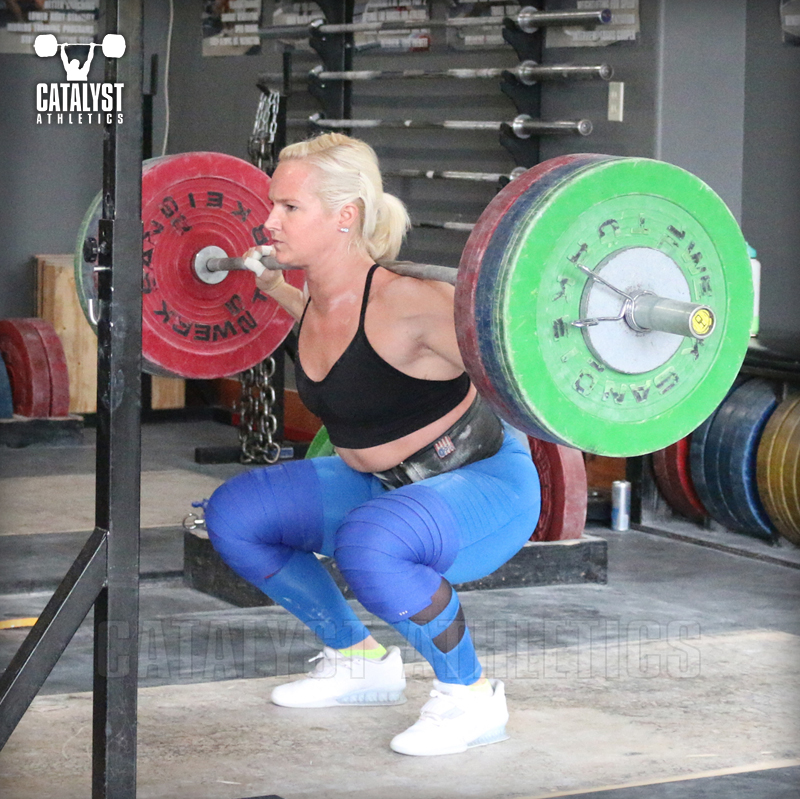Should Strength Athletes Do Cardio?

Let’s begin with hypertrophy. Hypertrophy occurs when we have high muscle fiber recruitment and high time under tension (i.e. high mechanical loading). Chris Beardsley, strength training researcher, suggests that endurance exercise causes high central nervous system (CNS) fatigue. CNS fatigue is the fatigue of the nervous system which can cause “a decrease in motor unit recruitment, firing rates and synchronization.” It is a systemic fatigue. If motor unit recruitment is decreased, hypertrophy will be decreased, and this is proven in research. Beardsley has written about long distance running reducing muscle fiber size throughout the body. Additionally, testosterone levels are reduced and cortisol levels are increased by this type of high volume endurance exercise. In a 1980 study, some subjects performed concurrent training with five strength workouts a week and six cardio workouts a week, while others performed strength training alone. This study showed that hypertrophy was reduced amongst those who did the concurrent training. According to Poliquin Group, muscle mass becomes compromised when endurance training is performed more than three times a week for more than 20 minutes.
Strength and recovery see similar reductions with concurrent training. The same 1980 study showed the group performing cardio seeing less gains in strength than those who only strength trained. The CNS fatigue that proves problematic for hypertrophy will also thwart gains in strength and lengthen recovery times. Longer bouts of endurance exercise produces more CNS fatigue than shorter bouts of the same exercise. Additionally, strength training does not produce the levels of CNS fatigue as cardiovascular training.
Weightlifters tend to care about power output above all else as we must move heavy weights with speed. How does cardio affect power output? Studies have found power output reduced as well by concurrent training. Full muscle fiber recruitment is necessary for improvements in both strength and power, so the CNS fatigue that accompanies endurance exercise will impede all forms of muscle performance (hypertrophy, strength, recovery, power) outside of endurance performance even when strength training is performed concurrently. This is referred to as the interference effect.
So, should strength athletes do cardio? For elite level strength athletes that are trying to maximize strength, recovery, and power, the answer is probably no. Poliquin Group recommends “pure power athletes” (e.g. throwers, weightlifters) avoid concurrent training entirely. Sports scientist Charles Pfeiffer says, “The consequences of aerobic exercise are too detrimental to be considered an effective training modality for anaerobic athletes; let alone a necessary one.” Wilson, et. Al. wrote, “Our research suggests that overall power is the major variable, which is affected by concurrent training. Therefore, athletes whose sport requires maximal power or rate of force development should limit concurrently training for strength and endurance.”
However, you may care more about your heart health more than being the best at any given strength or power sport. Maybe your doctor has said you should include cardio for overall health. Maybe you want to be well rounded in all areas of athleticism, including endurance. There are ways to incorporate cardio that will reduce the interference effect.
In discussing the interference effect, Beardsley points out that the effect is greatly reduced when aerobic exercise is performed after strength training. He gives these recommendations:
· Avoid performing cardio right before a strength workout
· Avoid long bouts of cardio
· Avoid cardio with a high degree of muscle damage (e.g. running).
With this in mind, HIIT training seems to be the logical choice for a weightlifter seeking to add in some aerobic training.
In 2012, Zuhl, et. al. showed that HIIT provides similar cardiovascular benefits as “continuous endurance exercise” or even better results in the case of stroke volume of the heart and VO2 max. And in 2008, Burgomaster, et. al did a six-week training study utilizing subjects who performed a HIIT style workout by performing four to seven 30 second bouts of max sprints on stationary bike followed by four minute recovery periods. These HIIT workouts were performed three times a week during the study. The results showed that the HIIT group saw improvements similar to the group that performed traditional steady state cardio.
Cycling would seem to satisfy Beardsley’s recommendation for lower muscle damaging forms of aerobic exercise and the HIIT protocol would be shorter duration which would cause less CNS fatigue. Poliquin Group recommends power athletes who need conditioning to stick to 6-10 repeats of 35 meter sprints with a ten second rest done on separate days from strength training days.
Strength athletes’ disdain for cardiovascular training isn’t unwarranted. Endurance exercise reduces hypertrophy, strength, power, and testosterone while increasing recovery times and cortisol levels. However, some athletes might need to incorporate cardio for health reasons or to become more well-rounded. The best way to keep your strength gains going while adding in cardio is to perform HIIT-style workouts on a stationary bike after your strength workout. Keep this in mind the next time you’re out of breath after your snatch triples.
| Chris Branam is a writer from Bloomington, Indiana, where he lives with Anna, his wife, and James, his son. He's a 96 kg lifter for Team SAW coached by Tom Sroka and trains out of the Iron Pit Gym. He has previously written for OLift Magazine, Lift Big Eat Big, and The Strength Agenda. |
Article Categories
Sort by Author
Sort by Issue & Date

